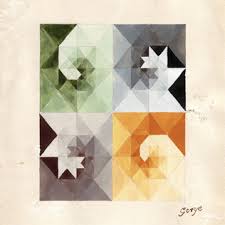Making Mirrors

Frank De Backer – album artwork
Listening to music is almost the same as making it.
While one is a simple way of consuming something, the audience not only supports and appreciates an artist’s work but paints a picture of what they want themselves to be seen as. In a world filled with judgment, it seems anyone can find what makes them tick, and find others who feel the same way. By expressing that simplistic nature of simply liking something, a listener may enlighten something within themselves that they’ve never thought about before, and gain new perspectives.
The other is a whole new level of immersion, taking that something and blossoming it. Musicians are not only able to expel something but obsess over what makes their project unique. This concept is so grand and complicated, almost the opposite of the simplistic nature of applying something the audience knows to themselves. To truly understand why someone might enjoy something like a song, they must reflect.
Gotye is an artist who grew out of a one-hit wonder, “Somebody That I Used to Know.” While most of his other works are shrouded under his most popular song, his album “Making Mirrors” encapsulates an extremely intriguing fact: that we, as a race, drive towards simplicity in a complex world.
The album is very similar to a storybook, in the way that each song has a definable story. “Bronte” is a story about a family friend’s dog passing, “Easy Way Out” is a story about a man unsatisfied with the routine of life, “I Feel Better” is a story about the way we feel joy. Even “Somebody That I Used to Know” is a duet centered around a bitter goodbye.
Each song rains down a specific path, yet can be read or seen from many angles.
Each listen to the song could provide new meaning specific to that listener’s experiences. “Bronte” could be a story about leaving a familiar home, or about a family saying goodbye to someone they love- it doesn’t have to be a simple story- but it can be.
Every track is so versatile and palpable to the point where each listen sounds like the first time.
The instrumentation is the same way. Some tracks have only three instruments, choosing to accentuate Gotye’s voice to put forward what makes each song so limitless. Each song is so simple yet develops the longer the audience listens. Gotye bridges the gap between producer and consumer by placing our own experiences at the gate and tapping into what makes each song so unique to them.
Gotye takes what he has made and uses it like a mirror, pointing our own identities back at us so that we can make our own, refracting our light into many different places, reaching spots no one has touched before.
Gotye makes the audience realize what makes their own opinion so special and how it is important for us as listeners and people to share these things, to reflect our light toward others.

Ciaran is a Senior returning to the staff team for his fourth year of writing and designing. He will also be collaborating with Cali as one of the managing...
